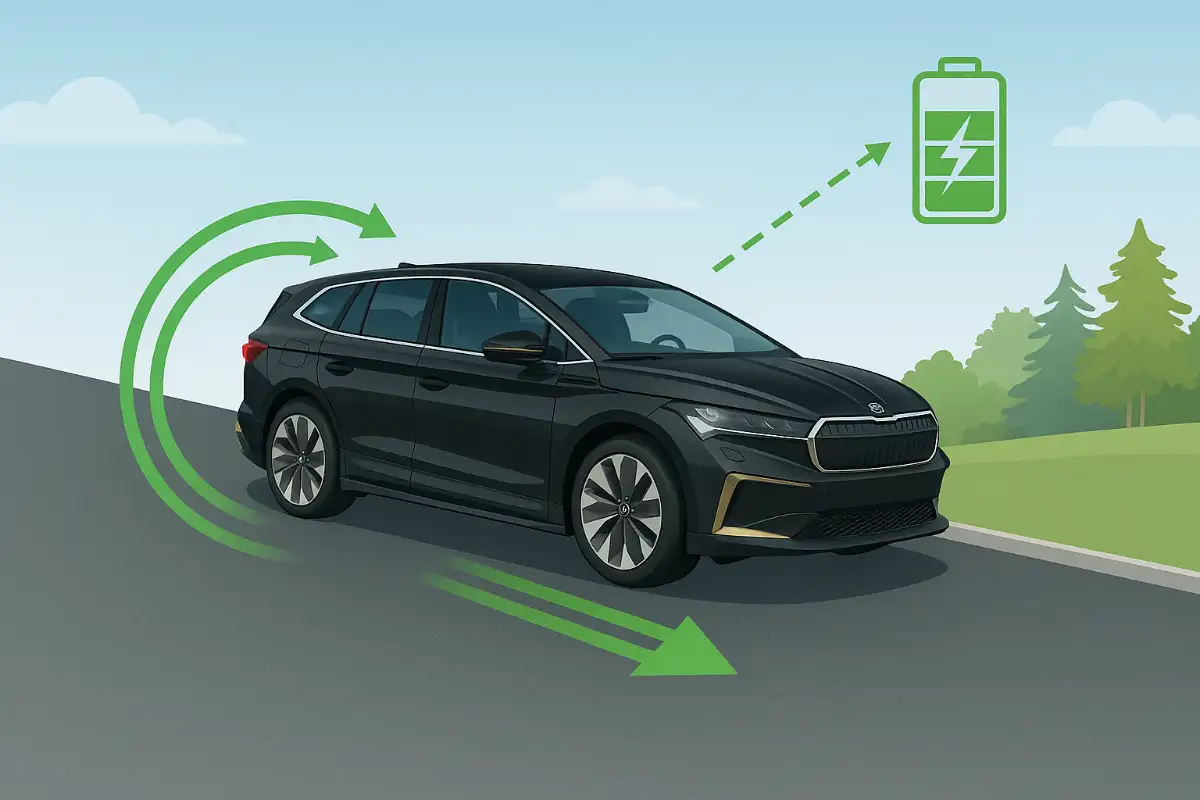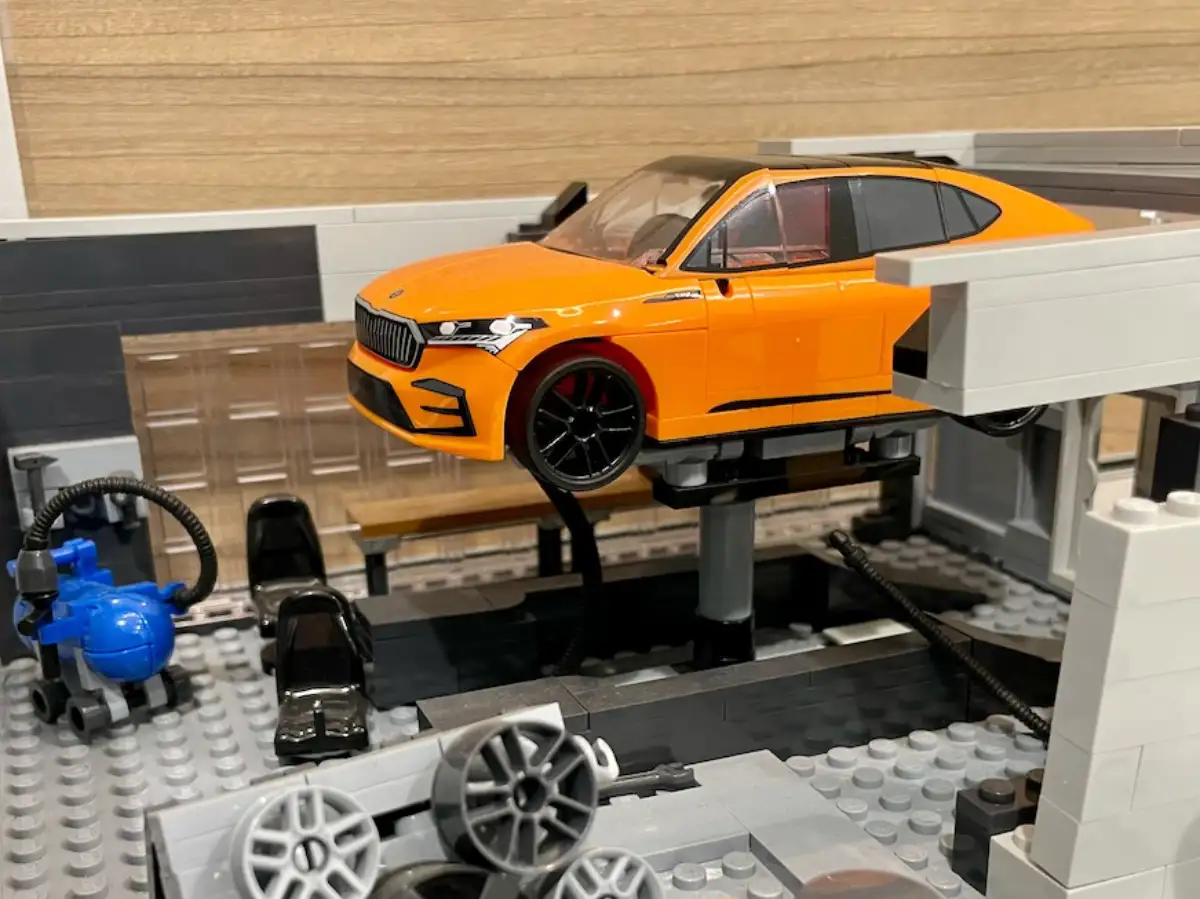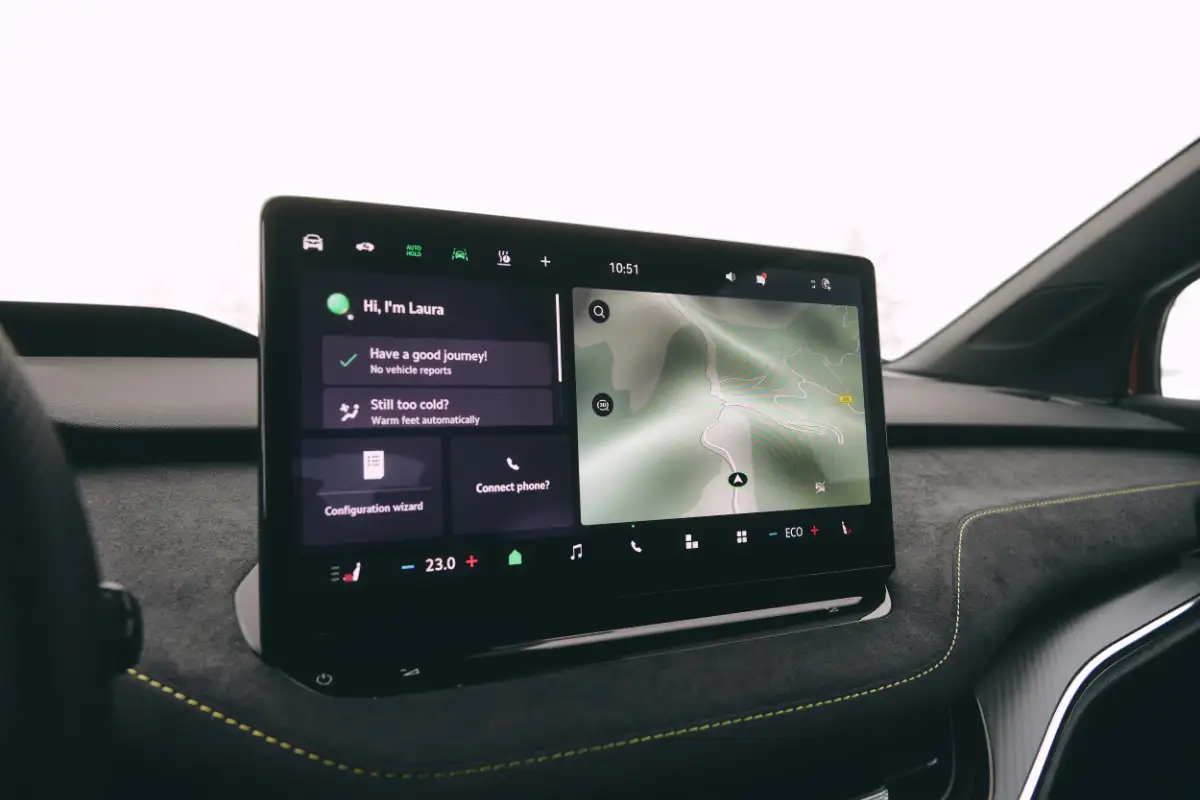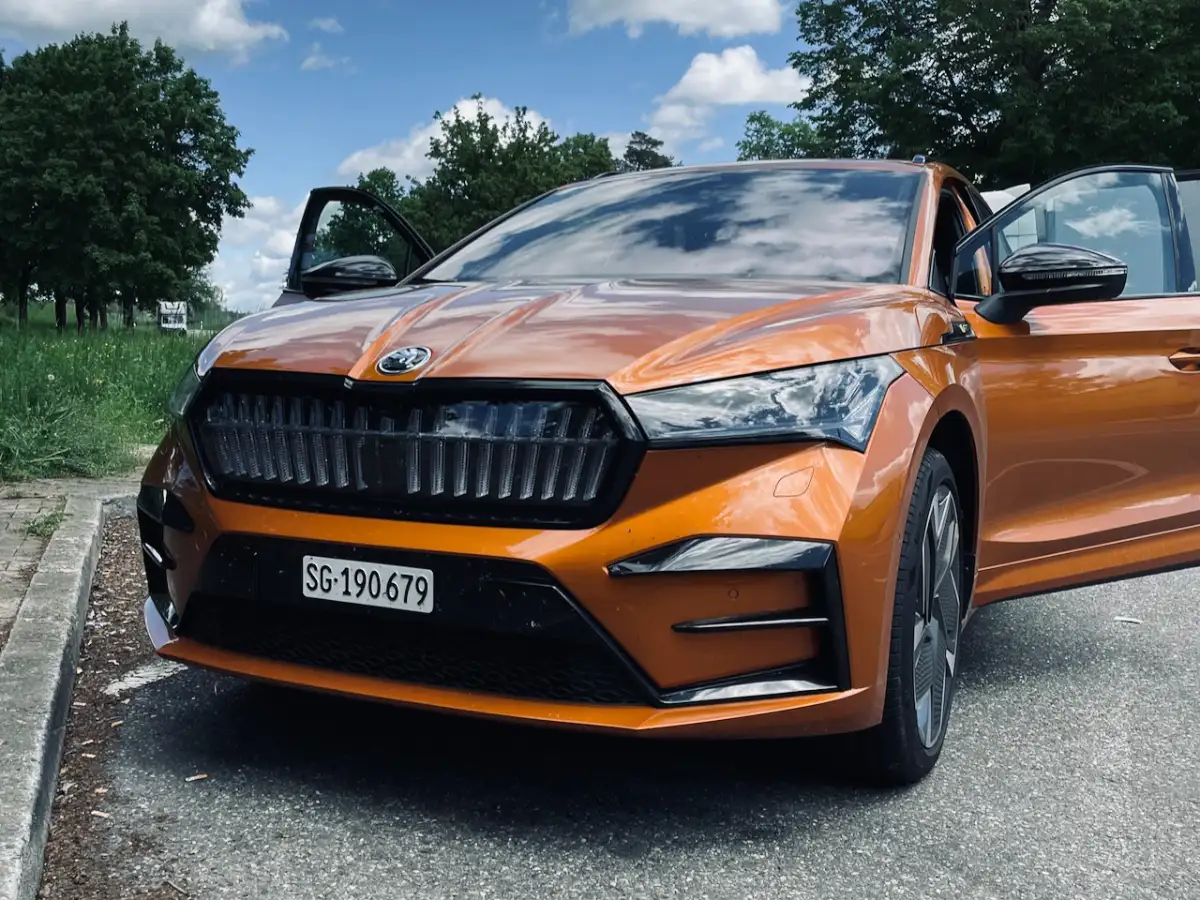Regeneration refers to the process of recovering energy during braking and is a crucial component of electric vehicles’ efficiency. Unlike vehicles with internal combustion engines, where braking energy is primarily converted into heat and thus lost, in an electric vehicle, kinetic energy – the movement of the vehicle – is converted into electrical energy and fed back into the battery during braking. This conversion happens through the electric motor, which operates in generator mode.
Regeneration is thus the reverse of the normal motor operation. When you release the accelerator or brake, depending on whether you’re driving in Mode D or B in your Škoda electric vehicle, the electric motor acts as a generator. Under optimal conditions, up to 80% of braking energy can be recovered, significantly improving the overall efficiency of an electric vehicle. However, to calculate efficiency, it’s important to remember that a car is not designed for electricity generation but for movement. Thus, we must also consider the losses when converting energy back into motion. As a result, an efficiency of about 60% is achieved, which pertains to a single regeneration cycle.
Why is Regeneration Important for Electric Vehicles?
Without regeneration, Škoda electric vehicles would be far less efficient than they are. Their energy consumption would be higher, reducing the range. Apart from highway driving, where very little regeneration occurs, in a “mixed drive” of city, country roads, and highways, you can recover between 5-20% of the total energy used for the trip. This reduces energy consumption and contributes to better range, as less energy needs to be taken from the battery for movement.
The importance of regeneration also lies in reducing wear on the mechanical brakes, as they are only used when stronger braking is needed. This not only recovers energy but also extends the lifespan of the brakes. Combined with the high efficiency of electric motors, this contributes to sustainable driving behavior. A prominent example on my YouTube channel is the ENYAQ taxi, which after more than 320,000 kilometers still has its original brake pads and discs, which also pass the TÜV inspection every year without any issues.
In addition, regeneration significantly reduces fine particle emissions, as it is emission-free. Mechanical braking, on the other hand, relies on friction, which leads to wear on the brake pads against the discs. A nice side effect is clean wheels, which accumulate almost no brake dust.
How Regeneration Works in Škoda Electric Vehicles
In Škoda electric vehicles like the ENYAQ and ELROQ, regeneration is preferred over mechanical braking whenever possible. This is automatically controlled by the vehicle systems, whether you’re driving with Travel Assist or pACC, manually using the brake pedal, using One-Pedal Driving, or using the regeneration paddles.
- Mode B: This mode enables “One-Pedal-Driving,” where the car significantly slows down when you release the accelerator pedal and converts the kinetic energy into the battery. The strength of regeneration depends on how much pressure you release from the accelerator. This is especially useful in city traffic or during prolonged downhill driving, where frequent or continuous braking is required. To further increase regeneration, the brake pedal can also be pressed.
- Mode D: In Mode D, regeneration is less pronounced, so the vehicle tends to coast or roll. This mode is particularly useful for long trips or highways, as it recovers less energy but enhances driving comfort by allowing the vehicle to roll without additional braking. Intervention via the shift paddles or the brake is always possible.
- Driver Assistance Systems: In conjunction with the adaptive cruise control and the Eco-Assist system, the vehicle optimizes regeneration based on traffic conditions. When the system detects an upcoming curve or stop sign, regeneration is automatically increased to reduce speed without the driver needing to intervene manually.
Conclusion
Regeneration is a key feature of electromobility that contributes to both increased efficiency and extended range. Compared to traditional mechanical brakes, it is significantly more environmentally friendly as it recovers energy and minimizes brake wear. In Škoda electric vehicles like the ENYAQ and ELROQ, regeneration is further optimized through various driving modes and intelligent systems, allowing drivers to benefit from maximum efficiency and a pleasant driving experience. However, it is important to note that coasting is always better than regeneration in terms of efficiency. But regeneration is definitely better than mechanical braking.





